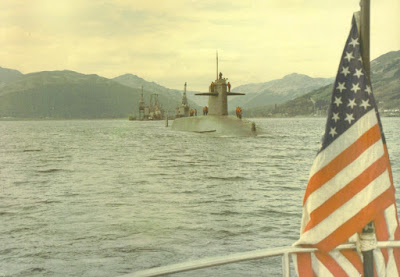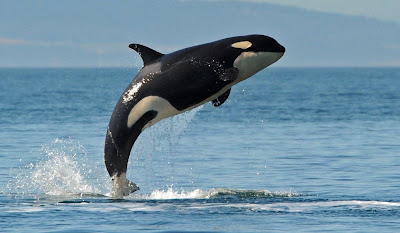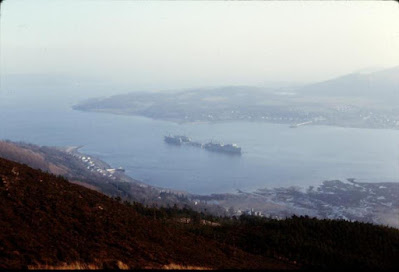A
friend and fellow Navy veteran who visited Olongapo in the Philippines while
serving in Southeast Asia during the Vietnam War asked to read Olongapo, the crime thriller I've written and hope soon to publish.
I told him that I had posted some of the
chapters on my website, and he asked that I repost the
chapters.
Below
is chapter one, Butterfly.
(You
can link to the other chapters below)
The
below story originally appeared in American Crime Magazine.
Butterfly
By Paul Davis
I lived in what
we considered a tough neighborhood in South Philadelphia when I was a teenager
in the 1960s. I ran with a tough crowd on the mean streets of South Philly, but
I would later discover that Olongapo in the early 1970s was a truly tough town.
I recall an old
Navy chief telling me and other young sailors on the USS Kitty Hawk about the
notorious port city as the aircraft carrier sailed towards the Philippines in
November of 1970. The chief, who had been around the world while serving many
years in the U.S. Navy, told us that Olongapo was the wildest place he had ever
seen.
“Once you
walk across the bridge over Shit River into Olongapo, you’ll be corrupted
quickly by sexy bar girls, cheap booze, available drugs, and all sorts of
crime,” the old chief said with a mischievous grin.
During the
Vietnam War, Olongapo, the city located next to the massive U.S. Navy Base at
Subic Bay in the Philippines, was like Dodge City, Las Vegas, and Sodom and
Gomorrah all rolled into one. The U.S. Navy’s Seventh Fleet ships
that operated off the coast of Vietnam during the war were frequent visitors to
Subic Bay, as the naval base provided repairs and replenishment to the warships.
As the pent-up
American sailors left the ships and swarmed into Olongapo, the city’s shadier
elements were waiting. Sailors walked out of the naval base’s gate and crossed
over the small bridge above the Olongapo River, called “Shit River” by the
Americans due to its muddy brown color and pungent smell. Despite the filth and
pollution, several small children on boats were willing to slip into the river
and dive for the coins the sailors tossed from the bridge into the water.
On the other
side of the bridge was Olongapo’s main street, Magsaysay Drive. Known as
the “Strip,” there was a seemingly endless line of bars, restaurants and
hotels all lit up in colorful neon lights. The street was noisy and crowded
with passing American sailors and Marines, street vendors, drug dealers,
pickpockets, thieves, con artists, armed robbers and innocent-looking young
shoeshine boys who were known to hold a razor against a sailor’s heel until he
handed over his wallet.
Also on the
crowded street were scores of young, attractive Filipinas enticing sailors to
come into their bar with blown kisses, swaying hips, pushed out breasts, and
shaking derrieres. Occasionally a girl would use strong-arm tactics, such as
grabbing a young sailor by the arm and yanking him into the bar and announcing
loudly that she had a “Cherry Boy” virgin.
Crossing
Magsaysay Drive was often a case of bravery or foolhardiness, as one could be
hit by one of the ubiquitous “jeepneys,” Olongapo’s colorfully decorated
minibuses that were converted from American jeeps abandoned after World War II.
The American
dollar was like gold in the early 1970s, and one could spend a wild night in
Olongapo drinking, eating, dancing, and staying in a hotel room with a local
beauty for only about $20.
I was 18 years
old when I first visited Olongapo in 1970. I was a cocky, street-smart South
Philly kid, as well as a lean and muscular amateur middleweight boxer, so I was
not intimidated by the barrage of sights, sounds and smells of this strange
town like so many other young sailors who first experience it. I was also not
fazed when a bar girl grabbed my arm outside of a bar and yanked me towards the
bar’s entrance.
“You so young
and handsome,” the pretty Filipina said as she tugged my arm. “You Cherry
Boy?” I pulled my arm loose from her grip and replied, “Not hardly.”
Thankfully, I
had good friends on the aircraft carrier who had visited Olongapo during the
Kitty Hawk’s previous combat cruise, and they warned me about the dangers and
pitfalls, as well as the delights, of the notorious city. As an aspiring
crime writer, Olongapo sounded like just the place for me.
All American
servicemen were duly warned of the dangers when visiting Olongapo’s bars and
other establishments. One rule pounded into the sailors by the older sailors
was not to “Butterfly” in individual bars. To butterfly was to associate with
two bar girls, called “Hostesses,” in any one bar. The bar girls were
protective of their claimed sailors and the money they earned from the sailors
buying them whisky (actually Coke) and champagne (actually 7-Up). The
price of a drink for the girls was only about a buck, so the sailors didn’t
mind paying this apparent scam. But the bar girls resented another bar girl
poaching on their moneymakers.
When a sailor
would butterfly, whether on his own initiative or by the encouragement of
another bar girl, the aggrieved bar girl would often fly into a rage and attack
the other bar girl, and sometimes the offending sailor.
Even before I
set foot in Olongapo, I heard the much-repeated cautionary tale about an
American sailor who committed the offense and paid a dear price. The bar girl
he had been seeing was so mad when he flirted with another bar girl that she
attacked the girl on the dance floor. To the consternation of the bar’s manager
and the utter delight of the American sailors, the two girls pulled hair, and
kicked and punched each other.
The
Filipino manager and his waiters pulled the two girls apart. The offended girl
then went to her purse and pulled out her Batangas knife, a weapon
more commonly known as a “Butterfly” knife. The knife had two handles with the
sharp blade concealed in the groves of the handles. When flashed, flipped and
fanned by someone who knew what they are doing, the butterfly knife was a most
scary and deadly thing.
This bar
girl knew how to use the butterfly knife and she charged the butterflying
sailor and slit his throat as he sat in a chair. He died on the way to the base
hospital.
On my first
visit to Olongapo in early December of 1970, I went into one of the bars with
some shipmates and met a pretty girl who sat with me as I bought her drinks. I
had fun drinking and dancing with her, and we ended up in a hotel room for the
night. I returned to the ship the following morning and we soon shoved off for
our first “Yankee Station” line period in the Gulf of Tonkin in the South China
Sea off the coast of Vietnam.
We spent
Christmas on Yankee Station, but we pulled back into Subic Bay on December
31st, New Year's Eve. Not everyone was glad to see us. The
American sailors stationed on the base and on smaller ships hated when an
aircraft carrier pulled into port. With the carrier’s 4, 700 men going ashore
with money in their pockets and eager for action, the city’s inhabitants went
all out to receive them.
In a case of
reverse butterflying, two sailors stationed on the base at Subic Bay resented
the Kitty Hawk’s sailors taking over the city on that first night in port. One
base sailor was truly angry, as his regular girl at the bar ignored him and
cuddled up to a young Kitty Hawk sailor. The base sailor got drunk along with
his pal and when the girl went to the restroom, the two base sailors pounced on
the Kitty Hawk sailor. They beat him to the floor and one of the two assailants
broke a bottle of beer over his head.
The Kitty Hawk
sailor was beaten unconscious before other sailors and the Filipino waiters
could break it up. The Philippine police and the U.S. Navy Shore Patrol rushed
into the bar and took hold of the two base sailors. The Kitty Hawk sailor was
gravely injured, and he was taken by two Shore Patrol petty officers to the
base hospital. The two base sailors were released by the Philippine police into
the custody of two other Shore Patrol petty officers and a junior officer. The
Shore Patrol petty officers handcuffed the pair and escorted them to the base,
where they were charged with aggravated assault and attempted murder by
civilian Naval Investigative Service (NIS) special agents.
The story of the
assault on the Kitty Hawk sailor spread quickly all over Olongapo. I heard the
story from another sailor as I sat in the Starlight bar with
two of my shipmates from the Kitty Hawk’s Communications Radio (CR) Division. Dino Ingemi was a solid six-footer with thinning dark hair. He was an outgoing
and funny guy from the Bronx and everyone in the division liked him. Mike Hunt was also a popular guy. He was a brawny, laid-back Californian
whose light brown hair, ski nose and easygoing manner belied his background as
an outlaw biker prior to enlisting in the Navy to avoid being drafted into the
Army. Both Ingemi and Hunt were Olongapo veterans, having visited the wild city
the year before during Kitty Hawk’s previous combat cruise.
As I was half-Italian on my mother’s side and I
grew up in a predominantly Italian American South Philadelphia neighborhood, I
called Dino Ingemi my paisan.
"Just another fun night in Olongapo, Paul," my paison said. "That
kind of shit won't happen here at the Starlight."
The Filipino
band at the Starlight had everyone jumping and dancing to
their renditions of popular American songs of the time. The Filipino musicians
were incredible mimics, sounding like Sly and the Family Stone with one song,
the Four Tops with another, and then went on to sound eerily like the Beatles
in yet another number.
We were all
dressed in “civies,” as sailors called civilian clothes, and I was wearing a
short-sleeved tan and black Italian knit shirt and black slacks. I was
something of a clotheshorse, and I differed from most of the other sailors, who
were usually clad simply in tie-dyed t-shirts and jeans. Thankfully, the
then-chief of naval operations, Admiral Elmo Zumwalt, the enlisted man’s hero,
allowed sailors to go ashore in civies rather than in uniform.
We sat at a
table drinking bottles of San Miguel, the local beer, when I was approached by
Linda Divita, a slim, pretty girl who swayed around me to the music and then
pulled me up from my chair to dance with her. Linda had long dark hair
and long lovely legs beneath her short black dress. The low cut of her dress
afforded one the view of her mostly exposed small breasts.
Dino
Ingemi approved.
“She’s got a
great ass and cute little tits,” Ingemi said to me when we finally sat back
down. I nodded in agreement as Ingemi was smacked on the arm by Marlena
Abadiano, the pretty girl he had been seeing since he first visited Olongapo
the year before.
Dino Ingemi was
very social and made friends easily. He had become close with the Starlight manager,
Samuel Rosalita, during the previous cruise. Rosalita joined us at our table
and laughed and drank with us. He gave me his business card and another card
that read “Welcome to the Starlight: Charming A-Go-Go dancers, Beautiful Ladies
and Outstanding Combos.”
I mentioned to
Ingemi that Rosalita looked like the entertainer Sammy Davis Jr, and Ingemi
began to call him “Sammy,” much to the manager’s delight. Rosalita chuckled and
shook his head at everything Ingemi said.
I had a fun
night drinking and dancing with Linda that New Year's Eve at the Starlight,
and when the bar closed, I took her to a nearby hotel. I was drunk and worried
that the girl would steal my money when I fell asleep, so when she was in the
bathroom, I looked for a place to hide my slim black leather wallet that held
my Navy ID and my cash. I looked up at the light fixture mounted on the ceiling
six feet above me. Thinking I was clever, I tossed my wallet up onto the glass
fixture underneath the light bulb.
Linda came out
of the bathroom and threw her arms around me and laughed crazily. She was loopy
drunk, but she was wild, sexy and fun in bed with me right up until the moment
she passed out in my arms. In the morning, I could not wake her. I knew she was
alive, as she moaned and muttered, but she would not move from her face down
position on the bed. I found a handful of “Red Devils,” a barbiturate, on the
bedside table next to her purse. I didn’t know how many of the pills she took,
but I was concerned.
I dressed her
and left the room. Rosalita’s business card did not have a telephone number on
it, so I went to the front desk and I slipped five dollars to one of the clerks
and asked him to go and get the Starlight manager.
I went back to
the room and saw that Linda was still out. About a half hour later, there was a
knock on the door. Rosalita came in, accompanied by one of his waiters and an
older woman who was the Mama-San for the bar. Rosalita thanked
me for contacting him and then looked at Linda on the bed. He cursed her in
Tagalog. The two men lifted Linda and took her out of the room. After they
left, I looked up at the ceiling light and tried to retrieve my wallet, but it
was beyond my reach. I went down to the front desk and asked the clerks for a
ladder. They looked puzzled. I returned to my room with two Filipinos and a
ladder in tow. They stood in the doorway in amazement as I climbed the ladder
and retrieved my wallet.
I gave each of
the hotel clerks a five-dollar bill for their trouble as I was leaving the
hotel room. The two Filipinos took the money as they laughed uncontrollably.
“Fuck you,” I
said to them, although I had to laugh along with them.
Back at the
carrier, I took a shower, ate lunch in the galley and then I took a nap in my
rack. When I awoke, I took another shower and changed into a black dress shirt
and light gray slacks. I met up with Hunt and Ingemi and we all headed out to
Olongapo and the Starlight. We took a table and Marlena came
over with Hunt’s girl Carmelina and sat with us. I was thankful that I didn’t
see Linda. Rosalita came over to the table with a waiter armed with a tray of
San Miguel beers.
Marlena
whispered into Ingemi’s ear, and he nodded. Marlena got up and left the table.
She returned to our table with a beautiful girl that she introduced to us as
her sister, Zeny Abadiano.
Zeny had long,
raven hair with bangs cut just above her dark, sultry eyes. She had a pretty
face and an alluring figure. At 5’ 11,’ I towered over her five-foot stature
when we danced. In addition to her being an exotic beauty, Zeny was sexy, smart
and funny. I was drawn to her immediately.
And I forgot all
about Linda.
After the bar
closed, Ingemi, Hunt and I took the girls to a nearby hotel. In my hotel room,
I took Zeny in my arms, unzipped her dress and let it fall to the floor. I told
her she was beautiful as I kissed her madly, and we fell across the bed.
A couple of
hours later, I heard a pounding on the door. I jumped up and retrieved my
pocketknife from under the pillow. I heard Linda on the other side of the door.
“Paul! Paul!
Open up!” I heard her holler. “I want to talk to you!”
Zeny pulled the
sheet over her head and giggled. “Oh, you think this is funny?” I told
Linda to go away.
“Paul, open up.
I want to talk to you!” Linda said in a screeching and blood-curdling voice. Of
course, I didn’t open the door. I then heard what I presumed were hotel
employees arguing with Linda in Tagalog, and thankfully the voices outside the
door finally ceased.
“So, you think a
crazy, drugged girl coming to the room was funny,” I said to Zeny as I took her
once again in my arms.
I was awakened
in the morning by a pounding on the door. Not again, I thought. But then I
heard Ingemi’s voice. I hollered out to Ingemi that I would be ready in a half
hour. I took a shower with Zeny and afterwards I sat in a chair, and she stood
in front of me nude and dried my hair with a towel. She took my pocket comb and combed my short, dark brown hair, carefully parting it on the
left side. I pulled her wonderfully luscious body towards me and hugged her.
I met Ingemi and
Hunt outside of the hotel and we grabbed a jeepney and headed back to the ship.
Later that
evening, Ingemi and I returned to the Starlight.
Zeny and Marlena
were waiting for us and the four of us took a table. Rosalita waved to us and
motioned to a waiter, who quickly came over with San Miguel beers. While we
were drinking at the table, Linda suddenly appeared by my side. Zeny grabbed my
arm and snuggled up close to me. Linda was clearly angry and deranged.
“You butterfly,
you motherfucker!”
“Get the fuck
out of here,” I replied calmly, tilting my head slightly to the right while
trying to sound like a South Philly half-a-hoodlum.
“I get you good,
motherfucker,” Linda said with a snarl.
Rosalita rushed
over to the table and spoke harshly in Tagalog to Linda. She spat on the table
and walked away. Rosalita apologized and left us. Zeny and Marlena were
unfazed, and Ingemi was laughing uncontrollably. Linda sat at a nearby table
with some poor sailor and began cursing me loudly in English and Tagalog.
“She crazy,”
Zeny said, kissing me to further anger Linda.
Linda then began
to fling lit cigarettes at us. Then she threw a beer bottle that hit our table.
Ingemi, who was no longer laughing, got up and walked over to Rosalita.
Rosalita listened briefly to Ingemi and then marched over to Linda, and he must
have told her in no uncertain terms to cut it out.
We resumed
drinking, dancing, and having fun and I tried to ignore Linda. A while later I
got up to go to the men’s room, which was on the other side of a wall that
separated the bar from the rest rooms, the kitchen, and storerooms. When I came
out of the men’s room, I encountered Linda in my path.
“You butterfly
me, you son a bitch,” Linda hissed. “I kill you.”
From behind her
back, Linda produced a Butterfly knife and began to twirl it in front of me. As
she flashed and fanned the knife in a menacing fashion, I threw a short right
punch that hit her square in the face. She went down, her nose and teeth
bloody, and she lay motionless on the floor.
Rosalita and two
waiters rushed in, and my immediate thought was that I would have to fight them
all. But Rosalita cursed Linda, who lay unconscious, and he kicked her twice.
The two waiters picked up Linda and took her away.
Rosalita
apologized profusely to me, and I walked back to the table and told everyone
what happened.
From then on,
whenever the carrier visited Subic Bay, I went to the Starlight and
stayed with Zeny.
I never again
saw Linda, and no one ever said what had become of her.
And I never
asked.
© 2022 By
Paul Davis
Note: You can read other chapters via the
below links:
Paul
Davis On Crime: My Crime Fiction: 'Salvatore Lorino'
Paul Davis On Crime: My Crime Fiction: The
Old Huk
Paul Davis On Crime: My Crime Fiction: Join
The Navy And See Olongapo
Paul Davis On Crime: My Crime Fiction:
'Boots On The Ground'
Paul Davis On Crime: My Crime Fiction: 'The
30-Day Detail'
Paul Davis On Crime: My Crime Fiction: 'Cat
Street'
Paul Davis On Crime: Chapter 12: On Yankee
Station
Paul Davis On Crime: My Crime Fiction: 'The Cherry Boy'
Paul Davis On Crime: My Crime Fiction: 'The Hit'
Paul Davis On Crime: My Crime Fiction: Welcome To Japan, Davis-San




%20(1).jpg)












.jpg)


